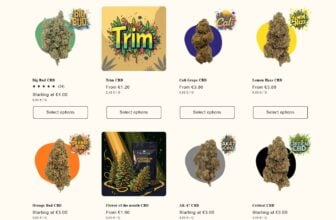Cannabis has many uses, from getting us high to supplying us with material that creates everything from lumber to car seats. And that’s mostly all thanks to the cannabis sativa variety that’s known for growing to towering heights while awakening the mind and body. Here are the best sativa strains.
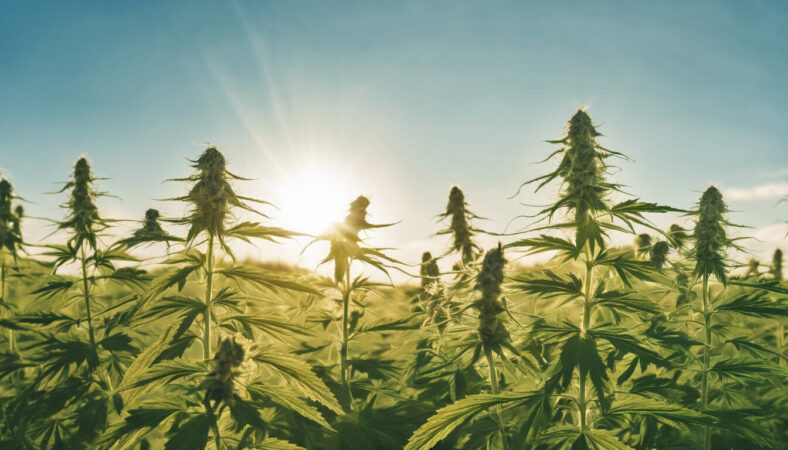
What is Sativa Cannabis Strain?
Known for their absurd height and longer life cycles, cannabis sativa plants are grown all over the world after first originating from Eastern Asia. Cannabis sativa plants share a lot of similarities with indica, resulting in most modern cannabis strains becoming a cross between the two. However, there is a big difference in the ways we use them.
Where we largely breed indica plants for medicinal or recreational purposes, we breed sativa plants for three different reasons. This is interesting because this means that while some sativa strains have the highest percentages of THC around, they can have the lowest while producing the highest levels of CBD.
Cultivar #1 (Hemp Sativa) – Rapidly growing with very long stems, these sativa strains typically have low THC content and are primarily grown for industrial purposes, such as producing textiles, paper, and other materials.
Cultivar #2 (CBD-rich Sativa) – Bred to be high in CBD and low in THC, these sativas are used to create CBD and hemp seed products. When THC is no more than 0.3% by weight, they earn the classification “industrial hemp”.
Cultivar #3 (Medicinal/Recreational Sativa) – Breed to encourage extensive branching and higher THC percentages, our last cultivar is grown for medicinal or recreational use.
The Best Sativa Strains
- Jack Herer
- Amnesia
- Lemon Haze
- Green Crack
- Harlequin
- Purple Haze
- Durban Poison
- Acapulco Gold
- Super Sour Diesel
- Charlotte’s Web
An Overview of the Best Sativa Strains
To put our list together, we look over any factor we thought would be important to you, whether you’re simply enjoying the crop’s effects after work or looking to grow. We found 10 amazing sativa strains, but not all will affect you in the same way.
Jack Herer
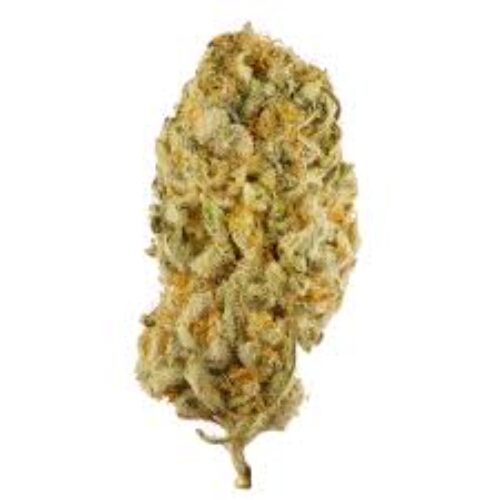
A delightful cross between Haze, Northern Lights #5, and Shiva Skunk, Jack Herer, named after the famed activist, will give you an insatiable euphoria despite causing some dry mouth. Jack Herer, like a lot of sativas, aren’t always the most attractive looking buds — they aren’t ugly just very ordinary and a bit long vs. dense. But Jack Herer more than makes up for that, with its gorgeous terpene profile that produces a strong citrus scent of orange and lemon.A combination of an indica, a sativa, and an indica-dominant, Jack Herer is just ever so slightly a sativa (55%). However, this makes it a wonderful first sativa strain to grow if you’ve never tried your hands at the species. There are a lot of places to buy Jack Herer seeds, but most agree Seni Seeds, who originally created this strain, are still the best.
Amnesia
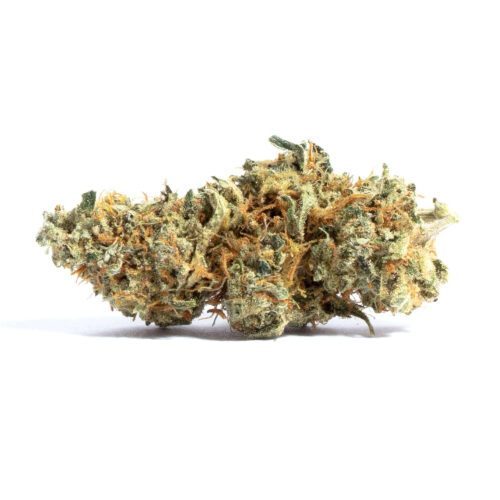
Appearing in the mid-90s, boosting a powerful 24% THC on average, Amnesia has earned the status as one of the best sativa strains around that still can go toe-to-toe with newer strains. Don’t believe me, well despite being a legal drinking age, Amnesia took the Cannabis Cup in 2014 and the Sativa Cup in 2012. With a creative and euphoric high, many report loving Amerisa for its ability to help with depression and muscle spasms. Thanks to its sweet, fresh, but earthy taste/aroma, it’s a great stain to medicate with. Where some of the sativa strains on our list can take 16+ weeks in flower before they can be harvested, Amnesia’s indica genetics allows some growers to harvest in just 10 weeks. That’s hard to beat when it comes to a sativa. Just make sure you don’t confuse Amnesia with Amnesia Haze, which has a flowering time of 13 weeks.
Lemon Haze
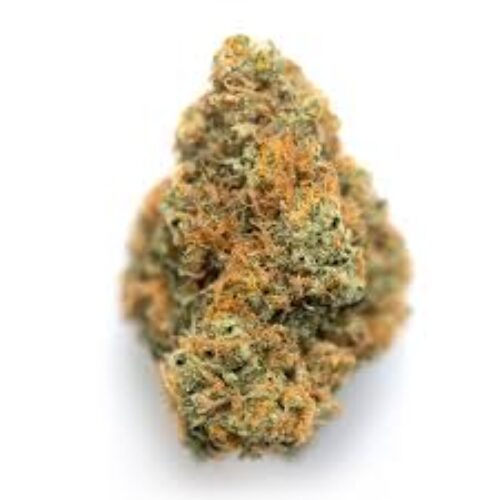
There is just something so appealing about cannabis strains that taste and smell like lemons, and Lemon Haze is one of the best at it. Where some sativas stay a boring green color, the buds on lemon haze can sometimes take on a gorgeous orange-yellow burnt color. Sitting around 21% THC, while not the strongest sativa on our list, this percentage is perfect for light smokers looking for a strong high.
Lemon Haze is just ever so slightly a sativa-dominant (60%) strain, and that does something pretty interesting. While this strain looks and feels like a sativa, the indica side allows some to harvest just 8-9 weeks after initiating flowering. We couldn’t find another strain with that short of a flowering time.
Green Crack
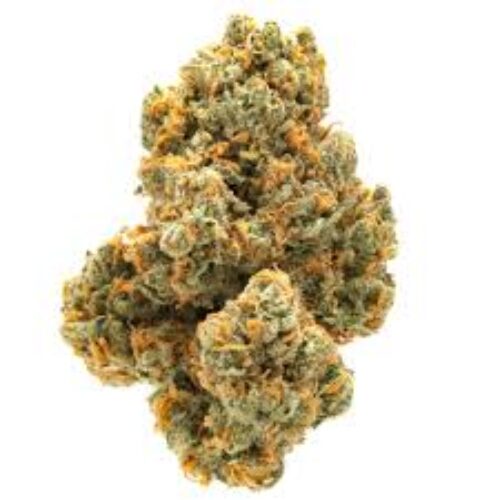
A three-way cross between a 1989 Super Sativa Seed Club, a Skunk #1, and an Afghani landrace, it’s safe to say Green Crack (also known as Mango Crack), has some interesting genetics, resulting in a range of phenotypes. However, while all over the place, little beats Green Crack flower from a reputable breeder. Just ask Snoop D, who coined the name, which was originally just Cush.
Many report that Green Crack will leave you very talkative, and it’s easy to lose track of time with this energetic strain. With a skunky mango flavor/aroma, it’s personally one of my favorite strains to grow. The shorter stature and flowering time don’t hurt that either.
Harlequin
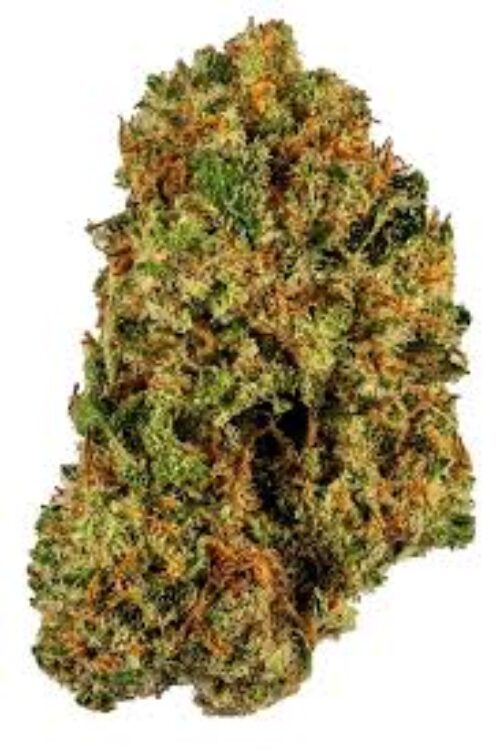
So far, we have focused on high THC strains, but Harlequin changes that by boasting 9% CBD to 5% THC. With nearly a 2 to 1 ratio, this is a great strain for those who have only consumed CBD but are curious how more THC can help.
THC is highly therapeutic but causes a high by overstimulating receptors; CBD will combat that. This results in Harlequin producing a relaxing effect over the entire body, but you’re unlikely to feel intoxicated unless sensitive to THC. To achieve higher than normal CBD amounts, harlequin has extensive landrace genetics, being a cross between three landrace strains that were then bred with a Colombian Cold.
Purple Haze

I know the song is already playing in your head, and I’ll be honest, the song probably describes the majestic and intoxicating euphoric nature of Purple Haze better than I can. So let’s try to focus where Jimi Hedrix didn’t. While a very sativa-dominant strain (70-85%), unlike most other Haze strains, Purple Haze stays fairly short with a flowering time between 8-10 weeks. This is pretty interesting since Purple Haze is one of the oldest strains on our list, potentially emerging sometime in the mid-1960s. Though others (like Jimi himself) claim the song came first, then the Purple Haze strain in the early 70s. Back then, Purple Haze’s THC range was a lot, but today, its moderate range of 16 to 19% THC is sure not to leave the daily toker lost in a dream.
Durban Poison
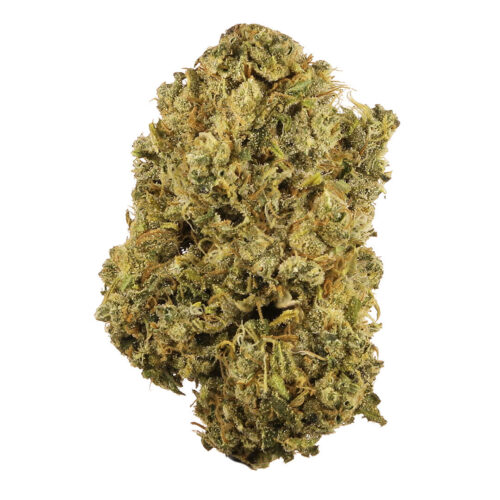
With its roots heavily in the landrace sativa genetic pool, Durban Poison is one of the purest sativa strains still around. Discovered by the famed Ed Rosenthal in the late 1970s in South Africa. When Rosenthal returned home with Durban Poison seeds, he gave a few to his friend Mel Frank, who created two phenotype lines, which still exist today.
Bud appeal is a big reason for Durban Poison’s fame because while it has the classic long sativa buds, they tend to fill out more, resembling an indica. While THC levels approach 24%, the strong head high will help keep you moving, making daily errands much more enjoyable.
Acapulco Gold

Acapulco Gold is a classic strain that originated from the Sierra Madre del Sur mountains near Acapulco, Mexico. Sweet and musky with a touch of spice, this strain is perfect for energizing the mind, making it one of my personal favorites when writing music. While it still has some classic archetypes of hippie weed, e.g., the buds are on the larfy side, breeding over the years has allowed this legendary strain to stand side by side with modern weed. This is 100% NOT the first sativa strain you should try growing, or really ever, because the height and flowering times are just absurd. My big mistake in growing this strain was giving it the same weeks in the vegetative stage as I would a hybrid or indica.
Super Sour Diesel

Super Sour Diesel is a beloved sativa derived from two sativa strains equally renowned (Super Silver Haze X Sour Diesel). With a THC range between 18-24%, it’s always a good idea to slowly approach Super Sour Diesel the first time you partake. One of the big reasons for this strain’s popularity is the strong diesel smell with light hints of moss and dirt. Despite being a very pure sativa, SSD can really pack on some dense nugs that will be nicely coated with trichomes. This strain is a good sativa to tackle for immediate growers, though I recommend growing Amnesia or Lemon Haze first.
Charlotte’s Web
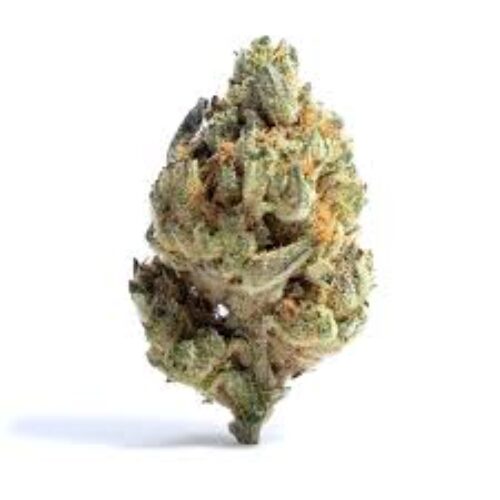
It’s hard to review Charlotte’s Web without going into its long back story. To keep it short, Charlotte’s Web was specifically bred to produce more CBD and less THC and was named after a young girl who battled with rare and severe seizures. The impact this strain had on Charlotte’s seizures was so profound that it’s hard to express just how important Charlotte’s Web and Charlotte herself were to the legalization movement.
At first, Charlotte’s Web didn’t earn the ‘industrial hemp’ title, but today you can find cultivars that have refined the flower down to near non-existent THC levels. Typically, CBD levels range between 12-20%, while THC levels stay around 1%. Tragically, Charlotte Figi passed away in April 2020 due to complications related to a respiratory illness. However, her legacy continues to inspire research and advocacy in the field of medical cannabis, and her impact on the industry will never be forgotten.
What to Look for in the Best Sativa Strains
The first thing to ask yourself when looking for the best sativa strain is how high or strong of a cerebral effect do you want? Some sativa strains can potentially get you higher like none other, but some won’t cause an intoxicating high at all. Let’s address that issue first since it falls very much on just the sativa variety while learning what else we should look out for.
*Please note that different growing and breeding practices by different cultivators will result in variations amongst an individual strain, i.e., you may love Durban Poison from company (A) but not from company (B).
Criteria #1 – THC to CBD Ratio
While it’s commonly thought that indicas have more CBD than sativas — and this may be somewhat true or complete hogwash — CBD products are mostly derived from cannabis sativa plants. In our review of The Best Indica Strains, every single strain caused an intoxicating high, with all of them having 15%+ THC and little to no CBD. That wasn’t the case here thanks to Harlequin and Charlotte’s Web. As such, while it’s important to always pay attention to the THC-to-CBD ratio of a strain, it’s especially important with sativa strains.
Criteria #2 – Certificate Of Analysis (COA)
You never want to buy a cannabinoid-based cannabis product when it lacks a Certificate Of Analysis (COA). However, due to cannabis sativa plants’ longer flowering times and greater discrepancies of THC to CBD, a COA is even more important here. Longer flowering times allow cannabis plants to uptake more heavy metal from their soil, which they love to do. Then, as we saw above, while an indica strain is likely to always intoxicate you, that’s not the case with sativa plants that are grown for many non-recreational reasons.
Criteria #3 – Cultivation
It’s more common to grow hybrids and indica-dominant strains on a non-commercial level thanks to their faster flowering times and more manageable height. However, we did see a fair number of sativa strains with flowering times that closely resemble the standard 8-10 weeks we give indicas and hybrids. This is one of the reasons more experts think we should completely do away with the indica/sativa definition, even on a cultivation level, in favor of terms like short-flowering cannabis plants and long-flowering cannabis plants.
Regardless, where you don’t need to pay much attention to height and flowering times with strains labeled indica or hybrid, you absolutely need to with strains labeled sativa. If you have only grown a plant with a standard flowering time of 8-10 weeks, please do not attempt a plant that goes longer than 13 weeks. The height difference and chance for something to go wrong significantly increases even when just extending flowering by a week.
What are the Potential Effects of Sativa Strains?
Cannabis sativa strains are touted for their energy-boosting effects and cerebral head high vs. indica sativa strains that are said to sedate you. When looking for the best indica and sativa strains, we noticed that sativa strains tend to not have the range of flavors and aromas that indicas did. This could potentially lead to sativa strains being more reliable in regards to awakening you vs. sedating you, as the terpene profile plays a huge influence along with the THC/CBD ratio.
Because nearly every sativa strain we looked at was technically a hybrid of indica/sativa, just leaning more to the sativa side, I greatly advise you don’t assume your sativa strain will awaken you. Just because the first two main terpenes are said to energize doesn’t mean the strain will as there are so many other terpenes, then the ratio matters, etc.
In general, expect a high THC to low CBD sativa strain to cause a euphoric and creative high. A high CBD to low THC strain will greatly reduce the chance of intoxicating effects, but will still provide a wealth of therapeutic effects related to homeostasis and regulation.
What are the Strongest Sativa Strains?
At 24% THC on average, Amnesia was the strongest sativa in regards to THC. With little CBD, the THC cannabinoids are largely free to have their way with CB1 receptors, which should translate into a powerful high.
An important thing to remember when you see the individual THC amounts for each strain is that it’s not set in stone by far. Cultivators with optimal setups that lead to optimal growth, harvest, and cures can easily increase the THC potential a strain may have.
To Summarize: What is the Best Sativa Flower Strain?
We’ve looked at 10 fantastic strains. Some with high THC to no CBD, others with way more CBD than THC. If you have only used CBD before, Charlotte Web and Harlequin are great strains to try. Looking to grow a sativa strain, you have a lot of great options, just stay away from Acapulco Gold until you are an expert. At the end of the day, I personally encourage you to start moving away from using terms like indica or sativa in regards to their effects. It greatly appears that the terpene profile affects whether the strain makes you feel more energized or tired. Sativas appear to more likely have those energizing terpenes, but indicas can easily have them too.
How Did We Pick These Products?
Our selection of products is based on an objective and meticulous review process. We start by ensuring that a product has been third-party lab tested. Key criteria also include the source of hemp, extraction methods, product potency, brand reputation and the overall feelings or experiences induced by the product. We also recognize the importance of real-world usage and customer reviews play an instrumental role in our evaluations offering insights from those who have firsthand experience with the products.
Why You Can Trust The Marijuana Index
Our team of passionate experts simplifies the complex, providing clear and concise insights tailored to your unique journey with cannabis or hemp products. We are committed to transparency, truth, and the potential of cannabis for wellbeing. To understand more about our commitment to you, we encourage you to learn more about us.
If you have more questions for our cannabis specialist editors, do not hesitate to contact us. You can also send us a tweet at @Marijuana_index. Stay updated with the latest cannabis news by subscribing to our Newsletter.



